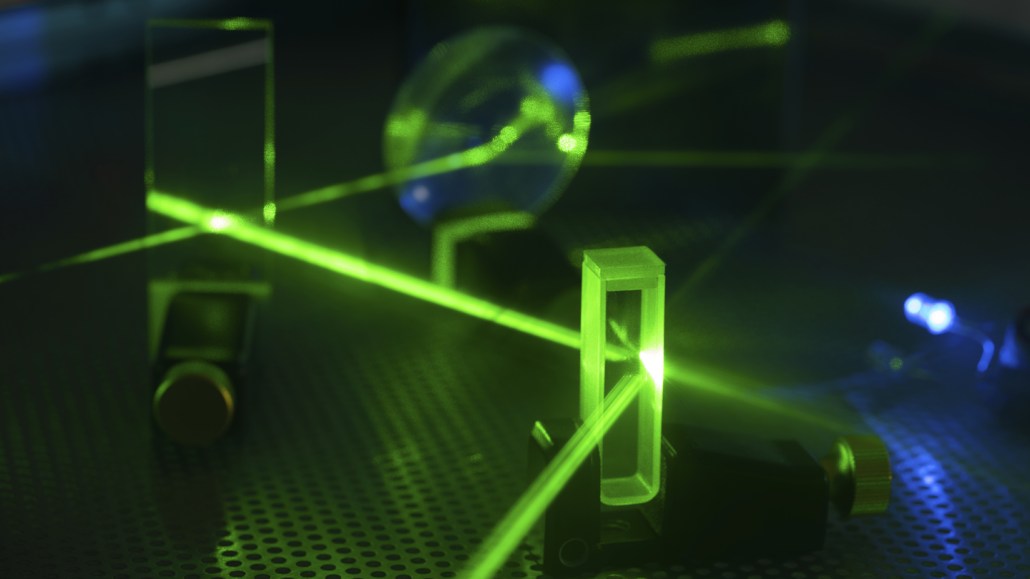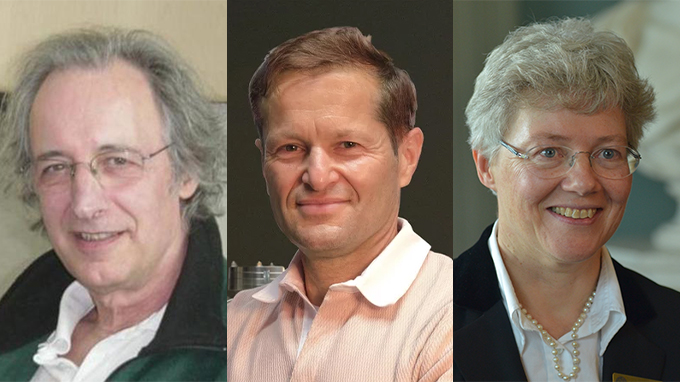Efforts to create ultrafast light pulses win 2023 physics Nobel
Such superfast blasts of laser light are powerful tools to probe electrons inside matter

The 2023 Nobel Prize in physics goes to a trio of researchers who used lasers to create extremely short bursts of light.
WLADIMIR BULGAR/SCIENCE PHOTO LIBRARY/GETTY IMAGES
Share this:
- Share via email (Opens in new window) Email
- Click to share on Facebook (Opens in new window) Facebook
- Click to share on X (Opens in new window) X
- Click to share on Pinterest (Opens in new window) Pinterest
- Click to share on Reddit (Opens in new window) Reddit
- Share to Google Classroom (Opens in new window) Google Classroom
- Click to print (Opens in new window) Print
By Emily Conover and James R. Riordon
Listen to this story:
Have feedback on the audio version of this story? Let us know!
Inside atoms and molecules, electrons zip around at extreme speeds. Their motions can only be captured with super short pulses of light — like camera flashes that last billionths of a billionth of a second. The 2023 Nobel Prize in physics goes to three physicists who have helped create such “attosecond” blasts of laser light.
By offering superfast snapshots of electrons, their research is changing our view of the inner workings of atoms and molecules.
One of the winners is Anne L’Huillier, of Lund University in Sweden. Another is Pierre Agostini at Ohio State University in Columbus. The third is Ferenc Krausz. He works at the Max Planck Institute of Quantum Optics in Garching, Germany. The trio will split 11 million Swedish kronor, or about $1 million in prize money. The Royal Swedish Academy of Sciences announced the honor October 3.
Humans have long strived to measure the world around them with increasing precision, says Peter Armitage. He’s a physicist at Johns Hopkins University in Baltimore, Md. “With the advent of lasers, the timescales that you could measure became shorter and shorter,” he says. The reason? “You’re doing it with ultrafast light pulses.”
Brief bursts
Over decades, researchers have gotten better at creating near-instantaneous bursts of light. In the 1980s, L’Huillier noticed that sending infrared laser light through a gas would create light waves with a variety of wavelengths. This happens because of how the infrared light interacts with the electrons in the gas. L’Huillier’s research helped clarify that process.
The wavelengths of light that emerge from the gas are known as overtones. They’re similar to the overtones of sound waves that help give musical instruments their unique sounds. Adding up the right blends of light wave overtones can create very short pulses of light.
In 2001, Agostini led a team that used this method to produce a series of super short light pulses. Each one lasted just 250 attoseconds, or billionths of a billionth of a second. The same year, Krausz and his colleagues created single light pulses lasting just 650 attoseconds each. Today, scientists can make much shorter pulses. These last mere tens of attoseconds.
“I was personally fascinated by this field from the start,” L’Huillier said in a phone call during the award announcement. “This is why I continued with it during many, many years.” L’Huillier is only the fifth woman to receive the physics Nobel. “There are not so many women that get this prize,” she said. “So it’s very, very special.”

Probing particles
Scientists have used superfast light pulses to explore the behavior of electrons inside atoms. For instance, the technique has revealed the timescale for the photoelectric effect. This is a process where light knocks an electron out of an atom.
Superfast light pulses have also unveiled new details of quantum tunneling. This is a bizarre process where electrons glide through barriers that should be unpassable.
Detailed views of electrons can reveal the behavior of molecules, too. “You can watch the motions of molecules themselves,” Armitage says. “This is of vast interest for all kinds of things.” It can help reveal why some materials are superconductors at high temperatures. (Such materials conduct electricity with no resistance.) Plus, it can help scientists study materials that harvest energy from sunlight. “It’s really just right at the beginning” of possible uses, Armitage says of the laser light technique.
Another exciting use for fast laser pulses is designing materials from scratch, says Robert Rosner. He’s a theoretical physicist at the University of Chicago in Illinois. “Chemistry is all about how electrons … interact with one another,” he says. So building matter from the particle level up requires knowing what electrons do when atoms connect to make molecules. And what they do when molecules connect to build materials.
“It’s like building a house,” Rosner says. “You need to know what goes first and what’s the next step.” That’s something ultrashort light pulses can help with. “It really opens up an entirely new way of thinking about how we actually make stuff.”







